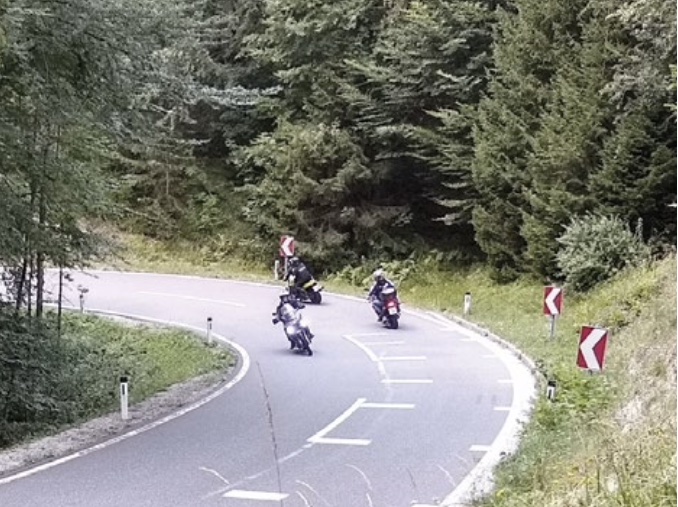Strange line markings on corners could prevent riders from head-on crashes, according to a recent study by Austrian safety group KFV Sicher Leben (Safe Life).
The line markings or “motorcycle perceptual countermeasures” consist of varying sized ellipsis and rectangular shapes next to the centre line on corners.
They were designed to influence the line riders take through bends.
In 2016, ellipses were applied at three of eight selected sites in Austria and bar-shaped markings were applied at the others.
Accident analysis from 2013 to 2019 show a 42% fall in motorcycle crashes at all eight sites, but the biggest reduction was on corners with ellipses.

The study also found a “significant shift in the driving lines of motorcyclists at the crown of the bend from the inside to the outside of the lane”.
This is often referred to as the head-on zone as many riders ride too close to this line so that when they lean the bike over, their head is actually on the opposite side of the road.
Prior to the introduction of the markings, around 36% of all motorcyclists rode to the outside of the lane at the crown of the bend, the KFV study found.
After their application, this figure rose to 68%.
“This significant increase was observed for both the bar and the ellipse markings, whereby the effect was slightly more pronounced for the former,” the study found.
This is not the first time line markings or perceptual countermeasures (PCMs) have been used on roads to influence rider behaviour.
In 1999, Melbourne’s Monash University developed road markings that make the road look narrower to reduce’ speed on the approach to deceptive corners.
Source: MotorbikeWriter.com

